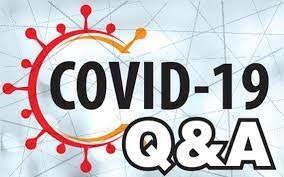Weekly COVID FAQ: Quarantine or Isolation?
What is the difference between quarantine and isolation?

Quarantine: You quarantine if you have been exposed to the COVID virus. The length of quarantine can vary up to 14 days depending on a variety of factors.
Isolation: You isolate if you have tested positive for the COVID virus, even if you do not show any symptoms. The length of isolation is at least 10 days from when symptoms begin, you are fever-free for 24 hours without the use of fever-reducing medications, and symptoms have greatly improved.
If you’re fully vaccinated, you don’t need to quarantine after being exposed to someone with COVID-19. However, public health recommends that you get a COVID-19 test around day 5 after exposure, or if you develop symptoms. Wear a mask in public for 14 days after exposure or until you have a negative test result. These precautions will help protect the people around you in the rare case of a breakthrough infection. If you develop any symptoms of COVID-19 in the 14 days after exposure, you should begin isolating and get tested, even if you have a previous negative test.
If you are unvaccinated or not fully vaccinated, you will need to follow the quarantine guidelines as described above.
